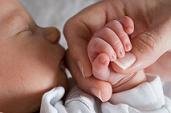Advertisment
Children born after infertility treatment are more likely to suffer from asthma

Asthma is more common among children born after infertility treatment than among children who have been planned and conceived naturally, according to findings from the UK Millennium Cohort Study published online in Europe’s leading reproductive medicine journalHuman Reproduction [1].
The study found that at the age of five, children born to sub-fertile parents – those who had either had to wait longer than a year before managing to conceive or who conceived via some form of assisted reproduction technology (ART) – were significantly more likely to experience asthma, wheezing and to be taking anti-asthmatic medication. The association was driven mainly by children born after in vitro fertilisation (IVF) or intracytoplasmic sperm injection (ICSI); these children were two to four times more likely to have asthma, wheezing or be taking anti-asthmatics.
However, the researchers, based at the universities of Oxford and Essex (UK), say that their findings should not worry parents of ART children. Dr Claire Carson, a researcher at the National Perinatal Epidemiology Unit at the University of Oxford (UK), said: “Although the children born after ART were more likely to be diagnosed and treated for asthma than other children, it is important to remember that in absolute terms the difference is quite small. Fifteen percent of the children in our study had asthma at the age of five. Although this figure was higher, 24%, in the IVF children, it isn’t much higher than the one in five risk for all children in the UK.”
She added: “Although we found an association, we cannot tell at this time if it is causal. Further research is needed to establish what might be causing the association and the underlying mechanism involved. It is also important to remember that for most children, asthma is a manageable condition and shouldn’t prevent children from living a full and active life.”
The UK Millennium Cohort Study is following prospectively 18,818 children from across the UK who were born between 2000-2002. It is one of the few large observational studies where data are available on conception, asthma diagnosis and key confounding factors. These new results are analyses of data from surveys of the children at age five and seven, who were born as a result of a singleton pregnancy.
The researchers asked mothers about conception and divided them into six groups: 1) unplanned and unhappy about pregnancy, 2) unplanned but happy about pregnancy, 3) planned with time to conception less than a year, 4) untreated sub-fertile, planned but time to conception of more than a year, 5) sub-fertile, where the pregnancy was planned and ovulation-inducing drugs were used, 6) sub-fertile, planned and treated using ART such as IVF or ICSI. Once the children had reached the ages of five and seven, the researchers asked whether the children had ever had asthma, wheezing or were taking medications for treating asthma. The researchers also took into account mothers’ history of asthma, smoking, BMI, socioeconomic status, furry pets in household, gestational age at delivery, type of delivery, breast feeding etc.
Of the 18,818 children in the cohort, full data were available on 13,041 at the age of five and 11,585 at the age of seven. Among the five-year-olds, 104 were born after ART.
Compared with planned children, those born to sub-fertile parents were 39% more likely to experience asthma, 27% more likely to wheeze, and nearly twice as likely (90%) to be taking anti-asthmatic medications at the age of five. This association was mainly related to an increase among children born after ART who had a more than two-and-a-half-fold increased risk of asthma, nearly two-fold increased risk of wheezing and more than four-fold increased risk of taking anti-asthmatic medications. Similar but reduced associations were also present at the age of seven.
The researchers say there could be a number of possible explanations for the association between infertility and asthma. These include: the severity of the infertility; infertility treatment; over-reporting of asthmatic symptoms by excessively protective ART parents (but the researchers think this is unlikely); or other, confounding factors that may not have been taken account of.
Dr Carson said: “Childhood asthma is a common condition in the UK where the prevalence of the condition is higher than other European countries, and (to our knowledge) this is the first UK study of asthma after IVF conceptions. Our analysis suggests that it is the ART group in particular who are at higher risk. However, we do need to be reasonably cautious when interpreting the results because there is a relatively small number of IVF cases in our study – just 104 babies.”
The researchers, led by Ms Maria Quigley, Reader in Epidemiology at the National Perinatal Epidemiology Unit, will continue to follow the children to see if the same effect can be seen at the age of 11, and they say more research needs to be conducted in larger groups of ART children to see if their findings can be replicated.
[1] “Asthma in children born after infertility treatment: findings from the UK Millennium Cohort Study”, by C. Carson, A. Sacker, Y. Kelly, M. Redshaw, J.J. Kurinczuk, and M.A. Quigley. Human Reproduction journal. doi:10.1093/humrep/des398
For further information contact: Emma Mason
wordmason@mac.com
European Society of Human Reproduction and Embryology





